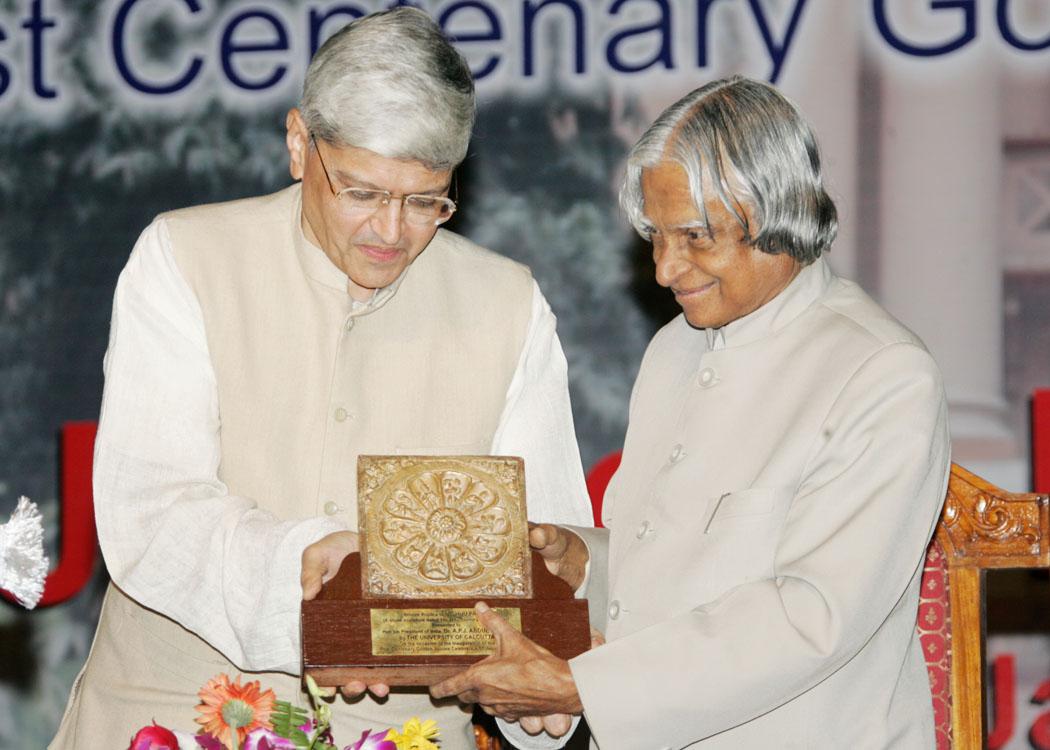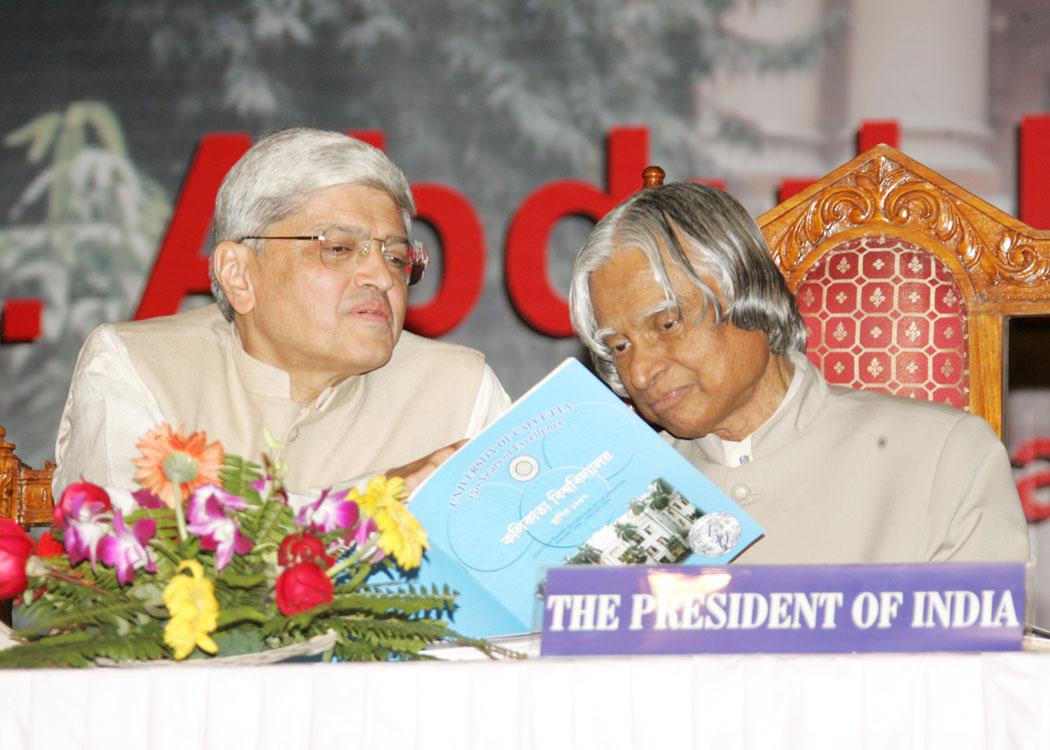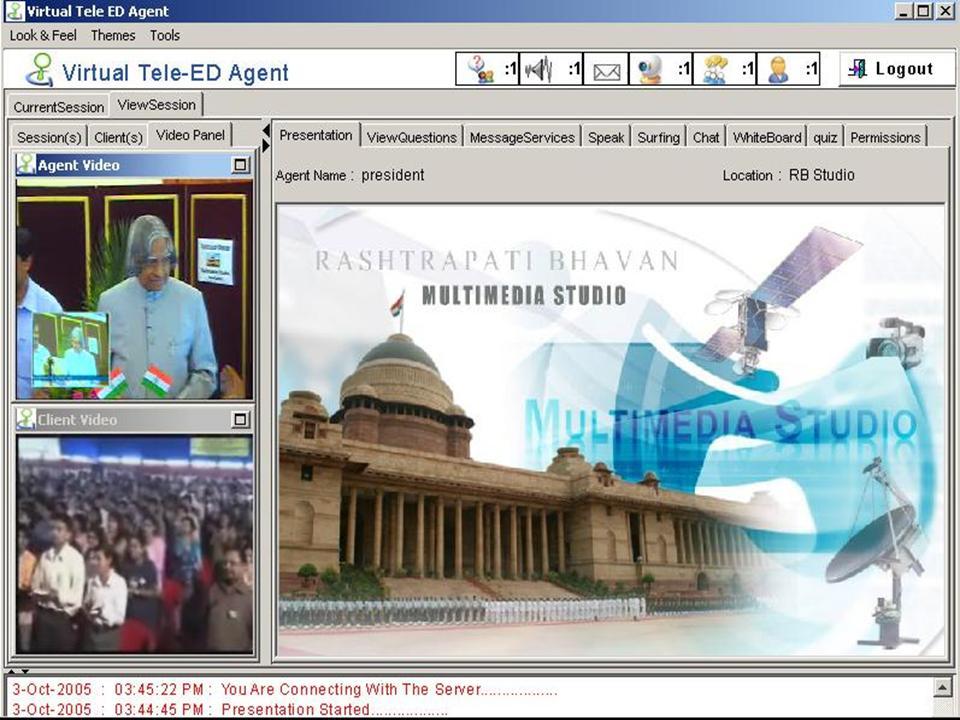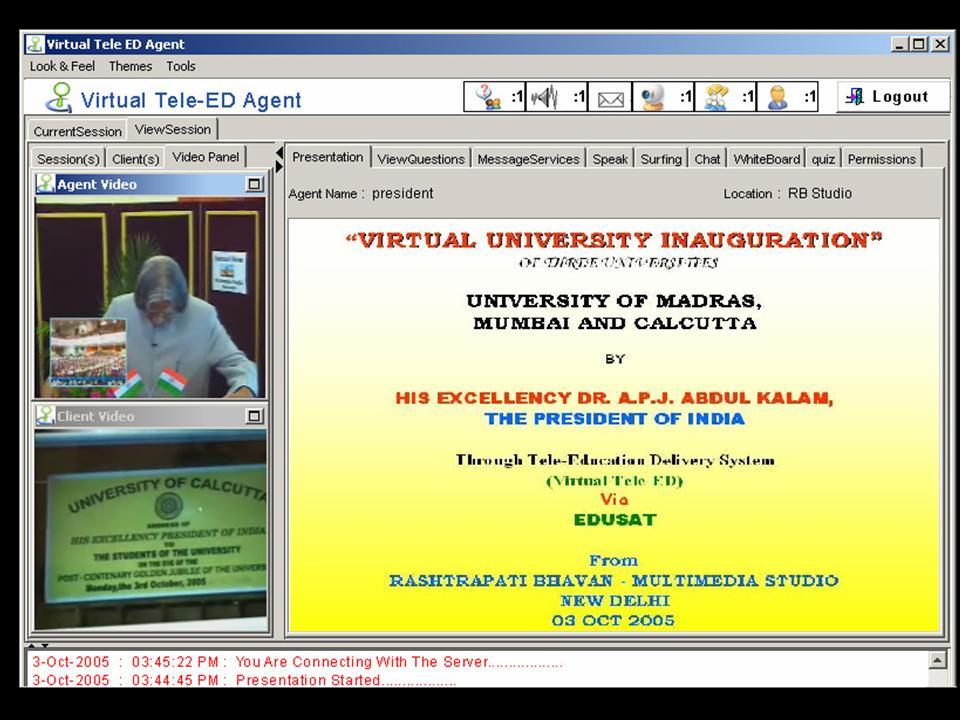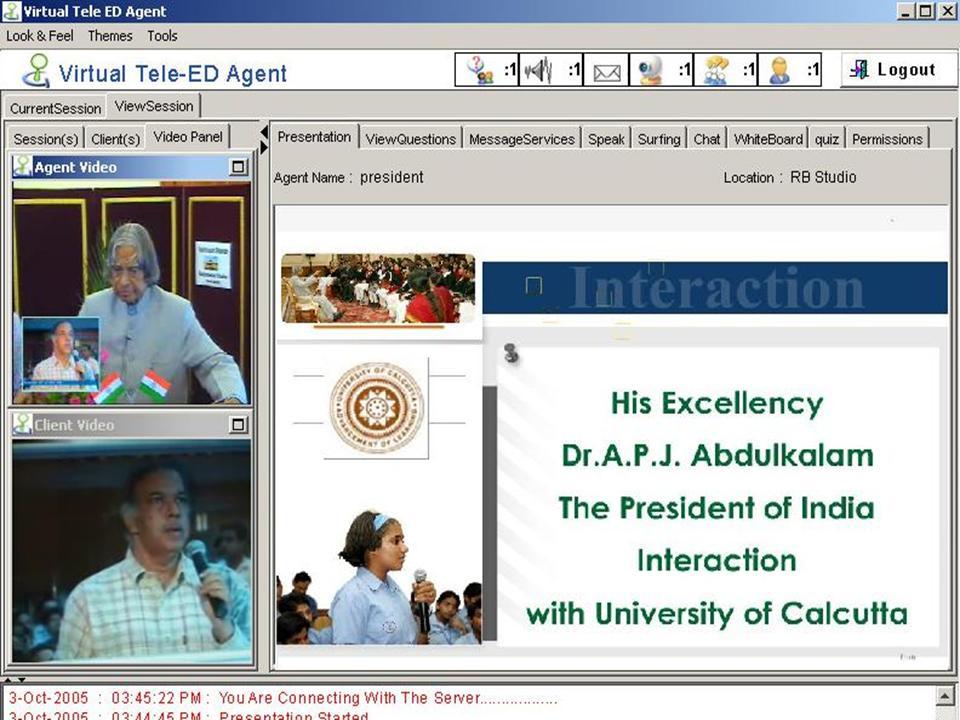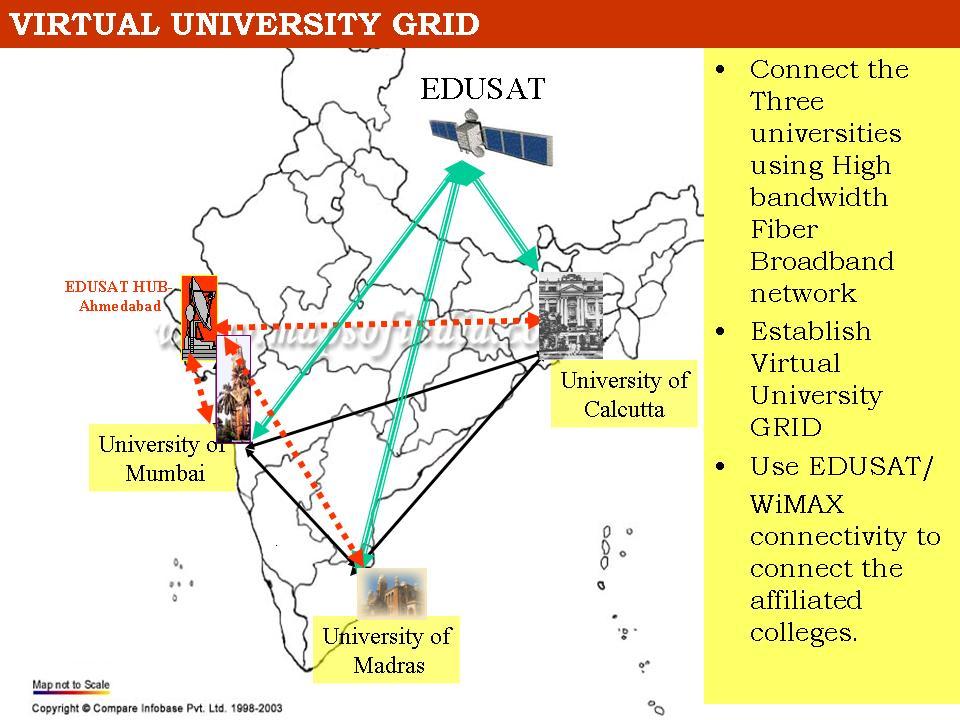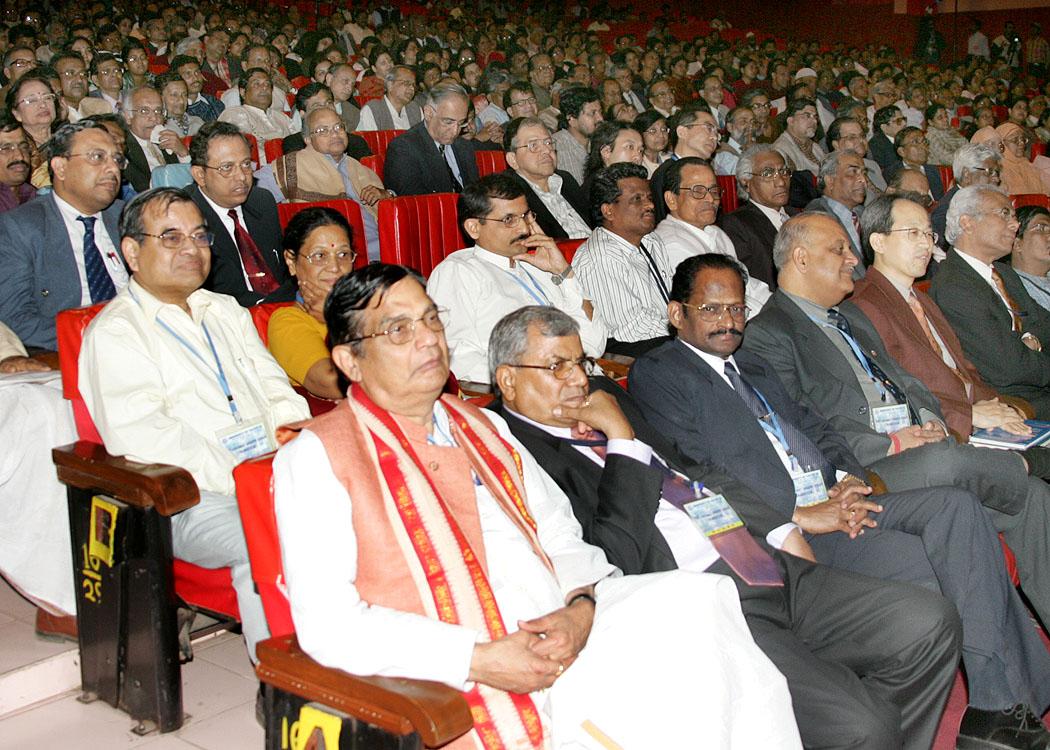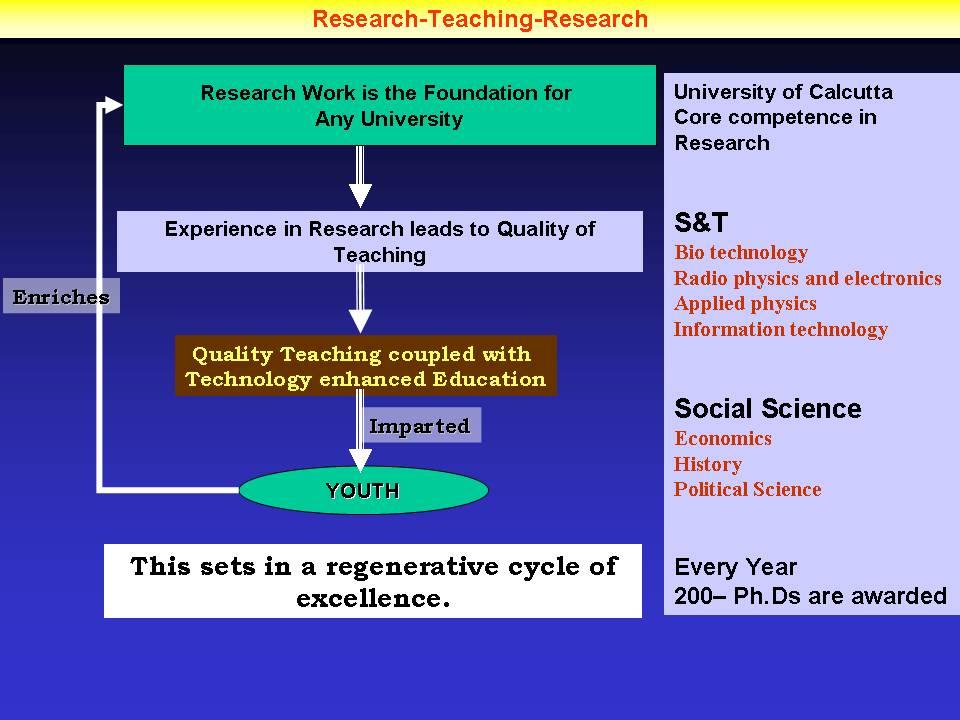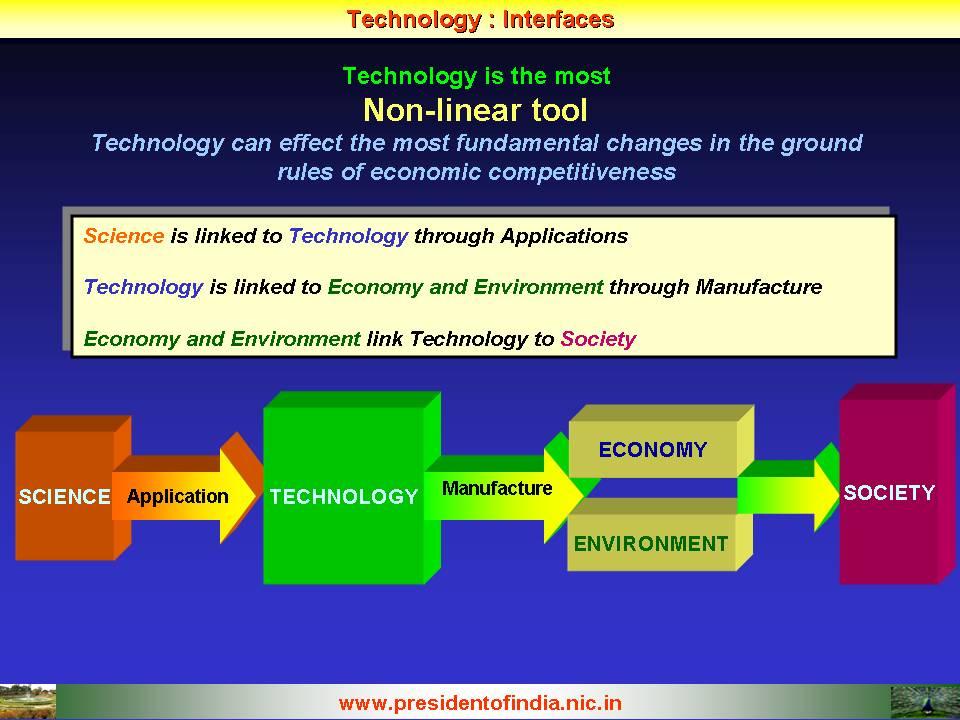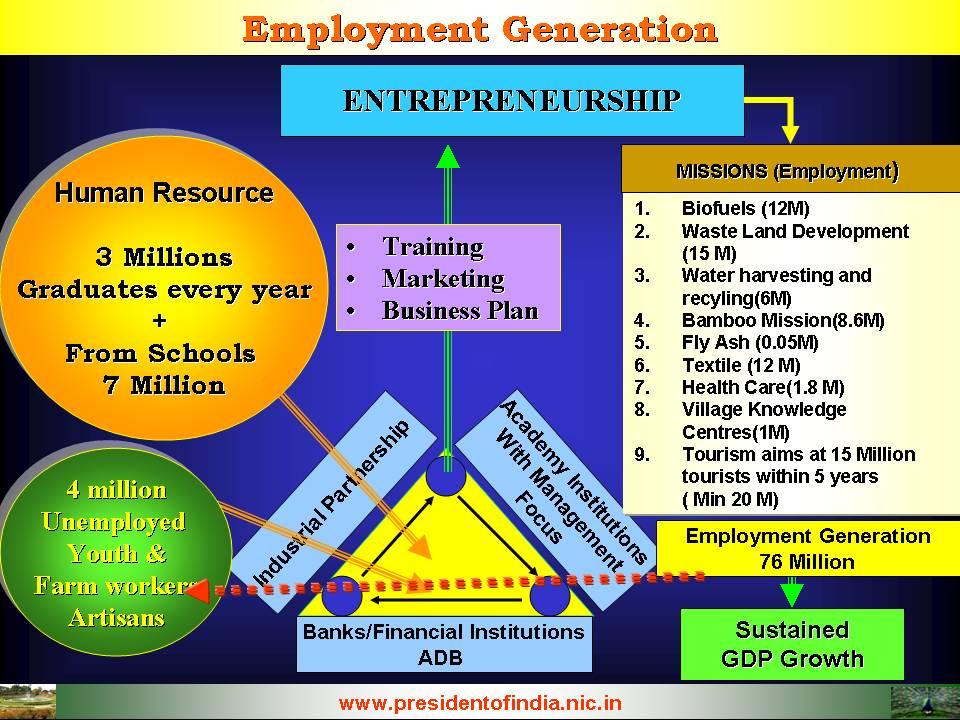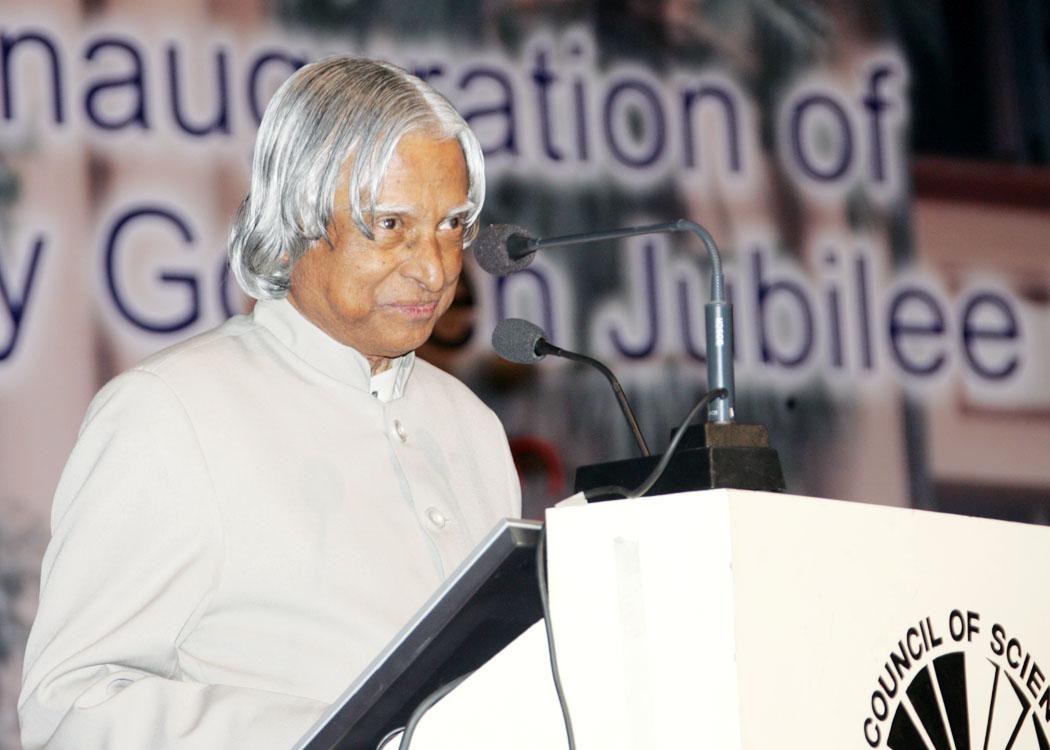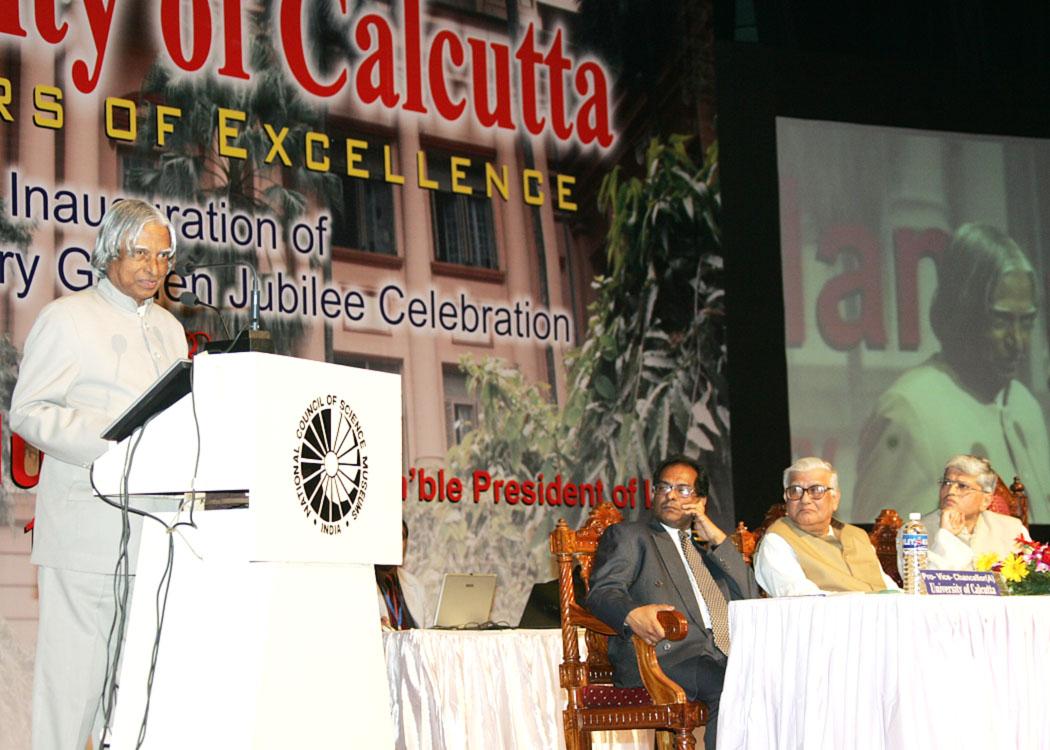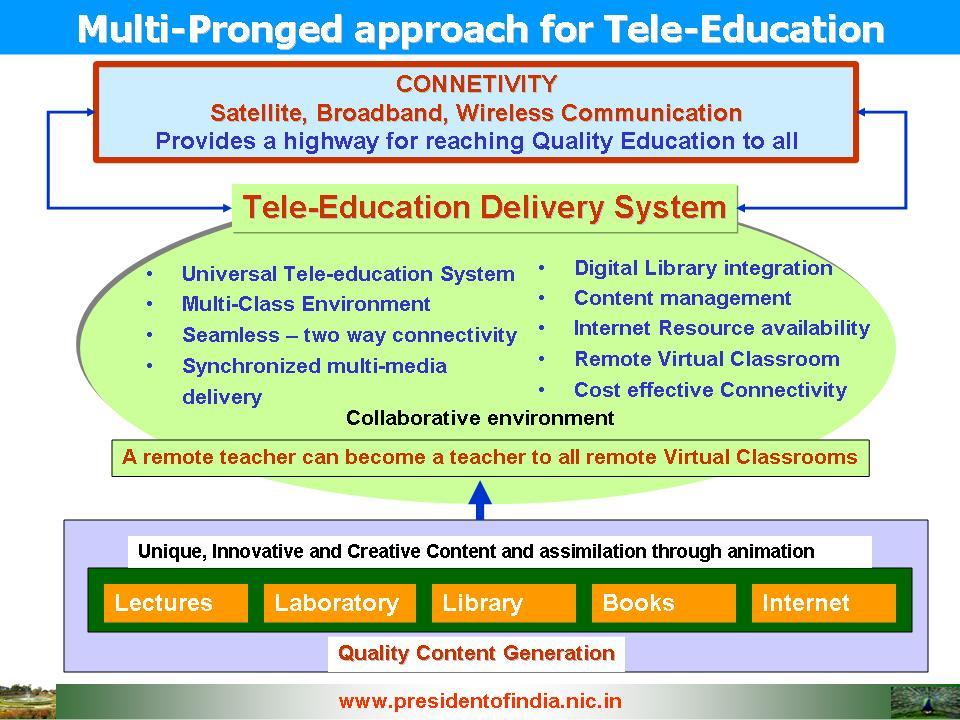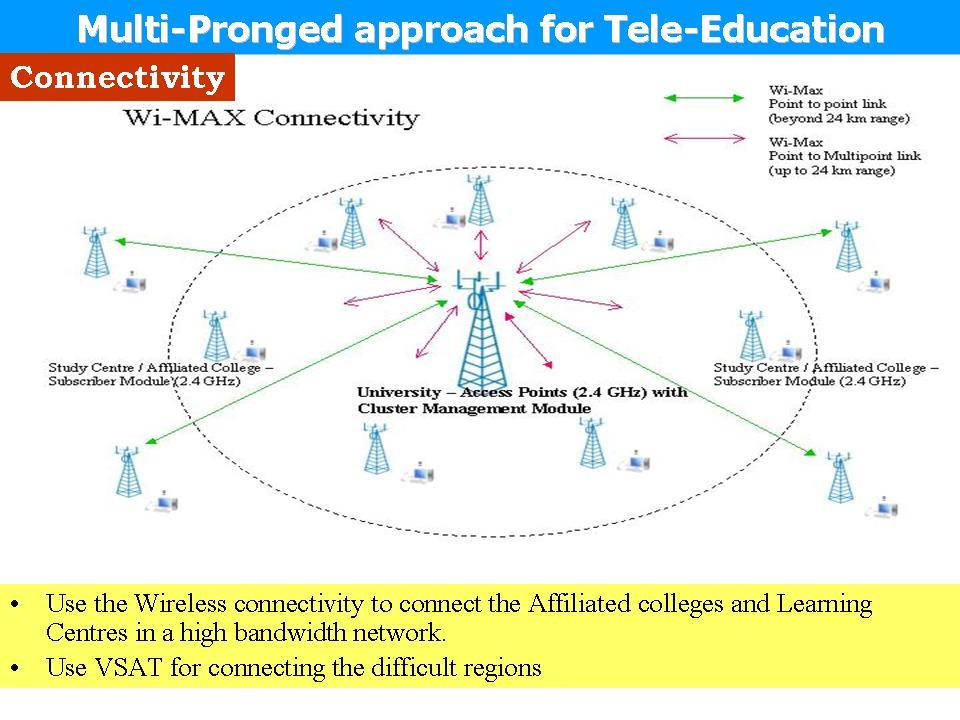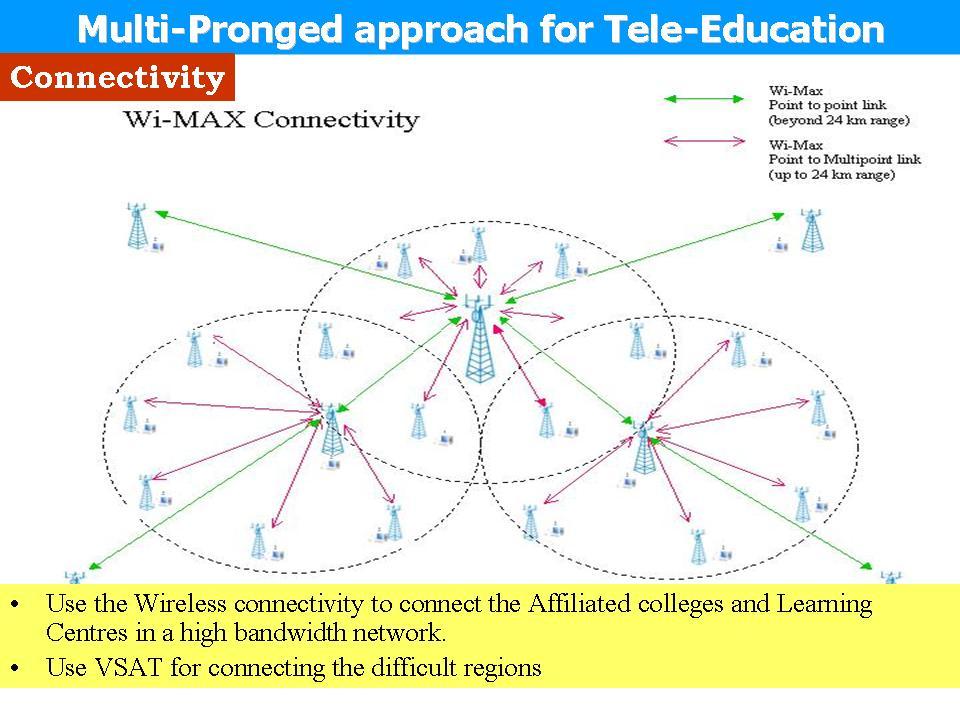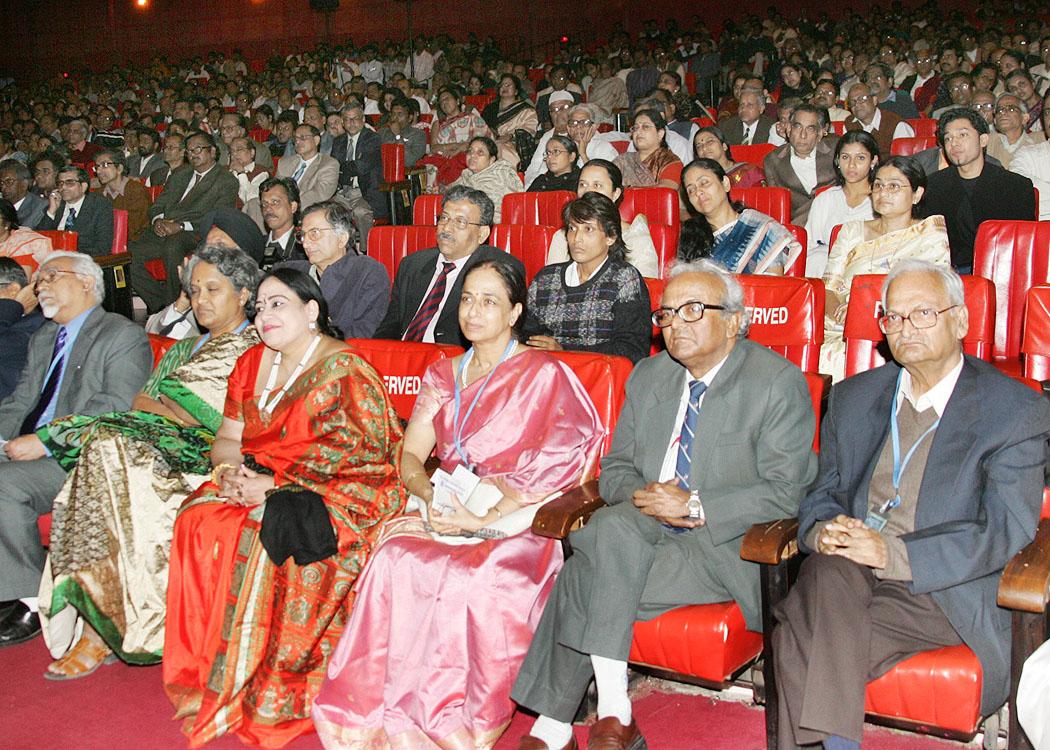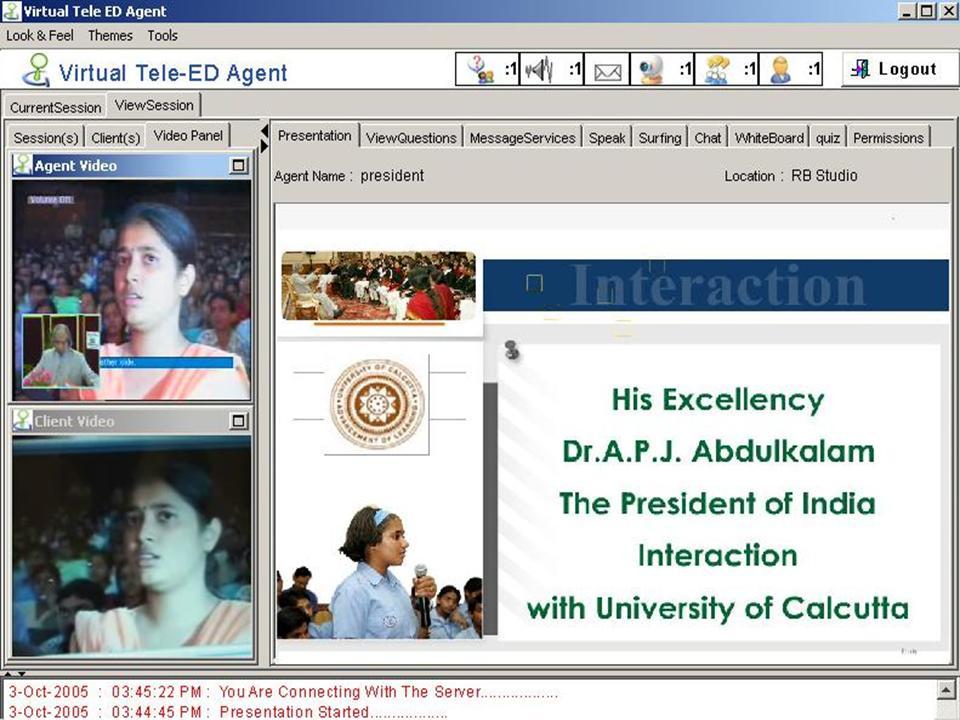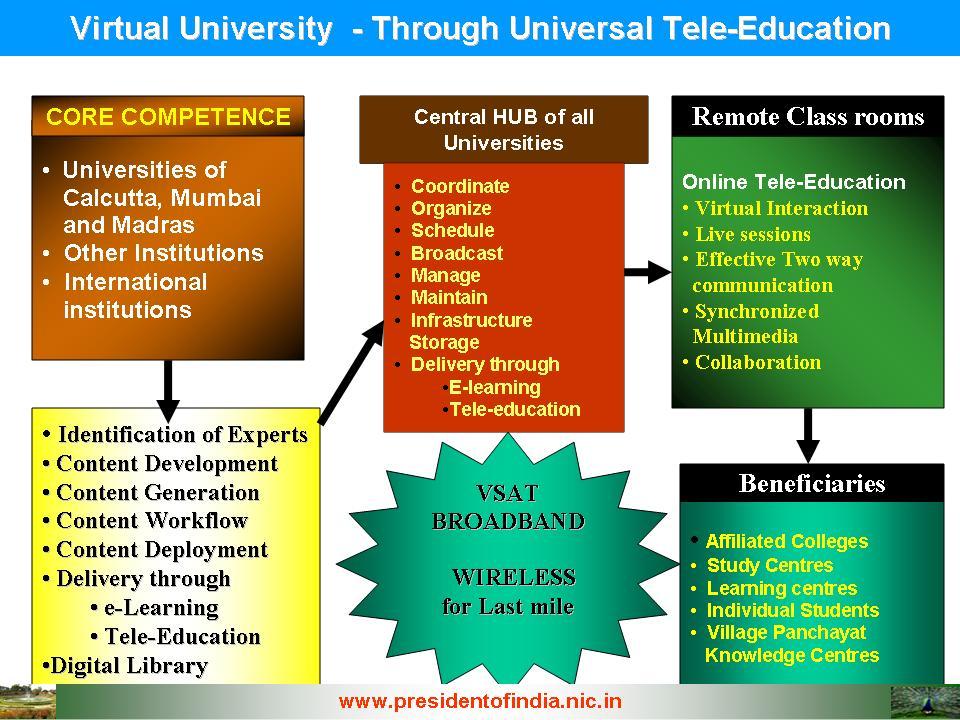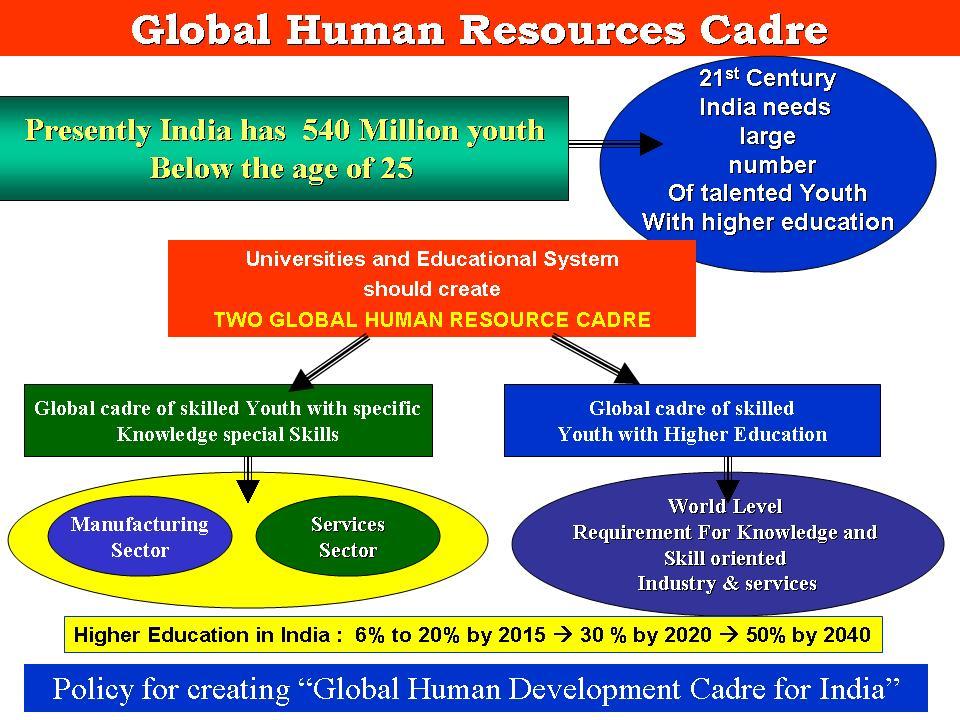Address At The Inauguration Of The Post Centenary Golden Jubilee Celebration Of University Of Calcutta, Kolkata
Kolkata : 17-01-2006
Profile of India's Great Universities in 21st Century
Frontiers of education have no border.
I am indeed delighted to be in the University of Calcutta to participate in the Post Centenary Golden Jubilee Celebrations. I take this opportunity to congratulate all the teachers, students and staff of this University and all those who have contributed in promoting excellence in educational standards of this University during the last 150 years. The University indeed has created many eminent teachers, professors, scientists, economists and distinguished personalities. Your University is singularly fortunate to have had the association of many distinguished personalities in its 150 years of educational excellence in particular I remember Sir CV Raman, Prof Meghnad Saha and Prof S N Bose. It is a great honour to your University and the nation that Sir C.V. Raman was awarded the Nobel Prize for Physics during his Professorship at the University of Calcutta.
Great traditions have been set for Calcutta University by pioneers like Sir Ashutosh Mukherjee, Sir C.V. Raman, Prof Meghnad Saha and Prof S.N. Bose. I was thinking what thoughts I can share with you on this great occasion of celebrating 150th Anniversary of the University. I have selected the topic "Profile of India's Great Universities in 21st Century".
I would like to recall my interaction on 3rd October 2005 simultaneously with the University of Calcutta, University of Mumbai and University of Madras. For me, it was a great experience to interact directly with fifteen thousand students of these Universities and also from Anna University, Madurai Kamaraj University and learning centres from IGNOU. I engaged in interactive discussions with them for nearly ninety minutes. I would like to give one question each asked by a student of each University typical of their thought process. Let us see the questions.
Arunava Roy, 1st Year Biotechnology, University of Calcutta.
"A majority of the bright students at the high school level aspire to become a doctor or an engineer. How can these rich minds be motivated towards taking up research as a first grade career option?"
Avinash J Poojari, NES Ratnam College of Arts, Science and Commerce, University of Mumbai.
"Mumbai was hit with unprecedented floods that destroyed property worth Rs. 5000 crores and many precious lives. This could have been minimized had the state government acted in time and with required sincerity. My question to you Sir is : What should we do as students to avoid recurrence of such a calamity?"
S. Jasmine Bernethu and twelve others from III B.Com, Mar Gregorios College, University of Madras.
"Let us assume that tele-education reaches all corners of India despite geographical, economic and technological barriers. Can it then eradicate the problems of illiteracy, dropouts and child labour?"
Through these questions and many others, one can see the urge for academic excellence and national development from the students. And also, this is a common thread linking the thoughts of the students from the three Universities. This has to be nurtured and grown and tele-education system is a powerful tool that can enable such encouraging trends.
This interactive session with these three great Universities was really the birth of a Virtual University in India and I would like to congratulate all the three Universities for initiating this step. Now I understand all the three Universities are working together to connect among themselves through high bandwidth network thus creating Virtual University GRID. This step will enable the students of these Universities and their affiliated colleges and post-graduate departments to have collaborative and interactive learning experience with the faculties of any of the Universities on the fly. The benefits of Virtual University which was demonstrated for the urban regions has to reach the rural areas especially to the two hundred and thirteen affiliated colleges and sixty five post-graduate departments located in Southern Districts of West Bengal.
Research-Teaching-Research
Any University is judged by the level and extent of the research work it accomplishes. This sets in a regenerative cycle of excellence. Experience of research leads to quality teaching and quality teaching imparted to the young in turn enriches the research. Research brings transformation and development and also enhances the quality of education.
Technology is the non-linear tool available to humanity, which can affect fundamental changes in the ground rules of economic competitiveness. Science is linked to technology through applications. Technology is linked to economy and environment through manufacture of knowledge products. Economy and environment are linked to technology, which promotes prosperity to the society. We have to use innovation to generate high value added products for becoming a global player. Your university is traditionally known for scientific research and teaching. This has to be consolidated and the expanded research areas of the University of Calcutta must be linked to the priorities of the state and the nation.
Adding Value to Education through Entrepreneurship
There has been substantial growth in our higher educational system and we are generating over three million graduates every year and over seven million 10 and 10+2 level candidates who are aspiring for employment. However, our employment generation system is not in a position to absorb all these youth leading to increase in educated unemployed, year after year. This situation will lead to instability in the social structure. We need higher education with employment potential that will create employment opportunities. A multi-pronged strategy is needed to make education more attractive and simultaneously create employment potential ? how do we do that?
Firstly, the educational system should inculcate by adding syllabus of entrepreneurship and prepare the students right from the school and college education to get oriented towards setting up of the enterprise which will provide them creativity, freedom and ability to generate wealth. Apart from entrepreneurship, the youth should have the spirit that ?we can do it?. Secondly, the banking system should provide venture capital right from every village level to the prospective entrepreneurs for undertaking new enterprises. Banks have to be proactive to support the innovative products for enabling wealth generation by young entrepreneurs. Thirdly, there is a need to identify marketable products and enhancement of purchasing power among the people. This can come through the implementation of mega programmes such as Providing Urban Amenities in Rural Areas (PURA), Waste Land Development, Interlinking of Rivers, Infrastructural missions, Textile mission, Health care mission, Bamboo mission, Power missions, Village Knowledge Centres, fly ash mission, tourism leading to the creation of employment for 76 million people. The Universities and schools should become a facilitator for crating this entrepreneurship scheme through the support of the banking system and the marketing system. This will enhance value to the education and create the motivation for the students. The Calcutta University and their affiliated colleges have a unique role in capacity building with students during their educational training period.
As you all aware, the revolution in information technology is sweeping across the world and India is acknowledged as a global leader in this field. Therefore, our country in general and University of Calcutta in particular is well placed for reaping the benefits of latest advances of information technology for accelerated evolution in the field of education.
Hence, I would like to talk to you on the importance of tele-education for the creation of Virtual University, which will greatly enhance the reach and spread of your existing system of education, not only throughout West Bengal but through our nation and the world too.
A multi-pronged approach for Tele-Education
A three-pronged approach is essential to make distance education programme viable and a successful proposition through the universal tele-education system to all remote parts of the country. The three components may be the Connectivity, Tele-Education System and the Quality Content Generation and deployment.
Connectivity: As you all are aware, the recently launched EDUSAT by ISRO is expected to provide one-lakh fifty thousand ground terminals in its full capacity. The other parts of the country have to be covered by providing Broadband and Wireless communication network in an integrated fashion. Terrestrial optical communication is becoming cost effective and can complement the space communication with its low cost, high bandwidth and networking capability. An integrated networked system comprising EDUSAT, Broadband and Wireless networks should provide a highway for reaching quality education to all
parts of the country. With the availability of Wi-MAX connectivity, the university of Calcutta can connect its affiliated colleges and learning centres in a high bandwidth network mode, which will provide a seamless connectivity to the students of University of Calcutta from any part of the West Bengal to interact with the other Universities.
Tele-Education System: Once we have the connectivity, then there should be a universal tele-education system in place for making full utilization of the connectivity to bring virtual classrooms in a multi class environment with seamless two-way interaction between the teachers and students in a collaborative environment. This system should not only enable the lecture delivered from the Studio at the university to reach any remote corner but also enable a good teacher in the remote area to provide multicast information to other participants of the programme.
A Tele-Education delivery system: I would like to narrate our experience in tele-education piloted at Rashtrapati Bhavan for providing satellite connectivity for the PREVIK (President?s Virtual Institute for Knowledge) members. The connectivity is through V-SATs provided by ISRO, Voice Over-IP and Internet. In this platform, the live virtual studio environment is created and it will connect a number of remote locations and provides seamless, one to many connectivity, through multicasting mode in a collaborative environment. This also provides two-way connectivity. In this platform, I can give a presentation and address the remote locations, where the multimedia delivery is possible and also I can interact through various collaborative tools. I can refer any informational website from Internet to all the remote locations and can also delegate the remote expert to give a lecture to all those who are connected. We have also established the Digital Library and digitized around 8 million pages. I can search for a particular page and push the page to all the participants through this tele-education. It is an integrated solution, which makes me feel as if I am virtually connected to all participants in multiple locations. In the present context with respect to universities, EDUSAT provides the connectivity. An integrated Tele-education delivery mechanism is available and being used. Similar system is being planned to be setup by the three Universities and is expected to be in place shortly. What is required now is the generation of quality content for sharing and transmitting to remote students.
Quality Content Generation: There are three components for education: lectures, laboratory and library. The content includes all the above three. Content can be generated in many ways. The first one is the assimilation of the subject by an expert teacher through research study of many books and articles leading to the generation of quality and creative content in a presentable format. The teacher presents in a unique and innovative way to make the content appealing and easily understandable to the students. The second form of content could be on a self-learning method by breaking down the content into a series of question answer models. Third may be from various books, which can be extracted through a digital library and presented just-in time to all the remote students. Fourth may be from Internet, where wealth of information is available. Teacher may search the information in the Internet and push the content live through the tele-education system.
The content should have supportive animations, which may even bring virtual laboratories and virtual immersion effects to the remote students. When the content is generated, it should be a sharable learning object across the nation and across all platforms. Some institutions and universities have already started developing their content. The content may be generated making use of the student?s creative and innovative thoughts under the guidance of the expert teachers as a group activity based on a pre-determined standard. This is possible where the capacity has been built by the educational institution into the student to teach while studying. The generated content through this process may be validated and deployed for delivery of lectures through tele-education system.
As an example, my lectures delivered during various functions are dynamically updated in our website. During the address many participants ask questions on several topics. The answers to these questions are also placed in the website as supplementary information. Similarly, the teachers after delivering the talk will also be asked a number of questions by the students. The proceedings of the questions & answers session can be added to the content document for enriching it.
Now I would like to discuss, how the universities could make use of the tele-education system for creating Virtual University with a typical model.
Virtual University
University of Calcutta can consider the networking of all the Colleges, related educational and research centres along with the networking of three Universities for imparting Universal Tele-education. Such a Virtual University will have the following tasks:
a) Act as a central hub of all the Colleges, related educational, and research centres.
b) Identify experts of national/international eminence in specialized areas and nominate college of eminence.
c) Coordinate, organize, schedule and broadcast the lecture of specialists at a mutually convenient time to all participants.
d) Network all Teachers Training Programme in the University.
e) Record the live transmission of the lecture with interaction details in a data bank for easy access by participants for review learning.
f) Digitize all the College and University libraries and make it available for seamless access by all the faculty and students of the University.
g) The University needs to become learner centric.
h) Collaborate with other Virtual Universities in India and abroad through the network.
This experiment in your University will provide a common platform for teaching in the University and its affiliated colleges and post-graduate departments. This will give equal emphasis on theory and experiments in spite of the fact that it will be done in the cyberspace. Such is the power of the technology and our understanding of it. This facility would also help in expansion of telecommunication and IT services. All this would lead to synergizing the strengths of different colleges of your University in promoting quality education to all the students irrespective of their location in a cost effective manner.
Attracting students to Virtual Universities
While it is unarguable that the Virtual Universities provide us with technologies of the future and the economic way of scaling high quality education in the country, they are no substitute to the campus-based education. The challenge to the Virtual Universities is to provide the best of both the worlds. In this process, we could plan an optimum mix of direct contact hours between the students and the teachers and amongst the students themselves. These interactions should also be used as a platform to excite the students to take to learning in the new paradigm.
In the world of Virtual Universities, the equitable access to all its participants is the primary goal. Unlike in the real world, the equitable access is always the democratic average, in the Virtual Universities the equitable access always means the equitable access to the best resources ? be it the teachers, be it the library, be it the laboratory, available across the network. In effect, the network brings out the best of its participants to every one of its participants. Now I would like to share with you some of the experiences at Rashtrapati Bhavan.
Connectivity and Collaboration Experience at Rashtrapati Bhavan
We have had interactive collaborative conference with number of institutions in India and abroad. The typical among these are:
a. Interactive sessions with engineering students of Punjab colleges through VSAT and Leased Line.
b. IGNOU connectivity to 100 locations through EDUSAT. So far we have connected 40 locations.
c. Interaction with the Carnegie Mellon University, Pittsburg, USA for Digital Library conference through Internet, three inaugural addresses through video conference with US institutions.
d. PAN African Network ? a Tele-Education Delivery system presentation to 28 African Union ambassadors through EDUSAT and Wi-MAX connectivity using the tele-education studio at RB.
e. Recently, in Dec 2005, I inaugurated from Rashtrapati Bhavan an Indo-US University network pioneered by Amrita Vishva Vidyapeetham and ISRO through EDUSAT with the Virtual Tele-education Delivery System connecting twelve colleges connecting four States.
During these interactive discussions and conferences, I have used all the available electronic connectivities through VSAT, EDUSAT, and Leased lines, ISDN, Internet and Wi-MAX with the Virtual Tele-education Delivery system in place. Presently all these connectivities are fully established at Rashtrapati Bhavan and are highly effective. With the experienced gained during the last three years, I realize that to promote effective, quality and actionable communication, we have to use multi-media comprehensively. This will be determined by the bandwidth availability.
Now I would like to discuss about the need for Global Human Resources Cadre.
Global Human Resources Cadre
In the 21st century, India needs large number of talented youth with higher education for the task of knowledge acquisition, knowledge imparting, knowledge creation and knowledge sharing. I am working for it. At present India has five hundred and forty million youth under the age of 25, which will continuously be growing till the year 2050. Keeping this resource in mind, the Universities and educational systems should create two cadres of personnel: (1) a global cadre of skilled youth with specific knowledge of special skills (2) another global cadre of youth with higher education. These two cadres will be required not only for powering the manufacturing and services sector of India but also will be needed for fulfilling the human resource requirements of various countries. Thus, the universities will have to work towards increasing the throughput of the higher education system from the existing 6% to 20% by the year 2015, 30% by the year 2020 and 50% by the year 2040. The other Indians who are not covered by the higher education system should all have world class skill sets in areas such as construction, carpentry, electrical systems, repair of mechanical systems, fashion design, para-legal, para-medical, accountancy, sales and marketing, software and hardware maintenance and service, software quality assurance personals etc. No Indian youth should be without either a world-class higher education or without world-class skills sets. This is the mission, which must be undertaken by Calcutta University in a big way in the Post Centenary Golden Jubilee year so that the educational growth in the West Bengal State takes place much faster and results in the generation of large number of knowledge workers in the State. We have to start right now to realize this goal since the overall time available for such an educational growth is short. A National Policy for creating a ?Global Human Development Cadre for India?, has to emerge.
Conclusion: Indomitable Spirit
Since I am in the University of Calcutta, I would like to recall a great clarion call of indomitable spirit, which was given by Sir C V Raman, at the age of 82. The message is still reverberating in my mind: ?I would like to tell the young men and women before me not to lose hope and courage. Success can only come to you by courageous devotion to the task lying in front of you. I can assert without fear of contradiction that the quality of the Indian mind is equal to the quality of any Teutonic, Nordic or Anglo-Saxon mind. What we lack is perhaps courage, what we lack is perhaps driving force, which takes one anywhere. We have, I think, developed an inferiority complex. I think what is needed in India today is the destruction of that defeatist spirit. We need a spirit of victory, a spirit that will carry us to our rightful place under the sun, a spirit, which will recognize that we, as inheritors of a proud civilization, are entitled to a rightful place on this planet. If that indomitable spirit were to arise, nothing can hold us from achieving our rightful destiny."
I inaugurate the post centenary Golden Jubilee Celebrations of the University of Calcutta and my greetings to all the members of the Universities on this historic occasion. My best wishes to all the members of University of Calcutta in their mission of providing quality education to the youth of West Bengal.
May God bless you.

